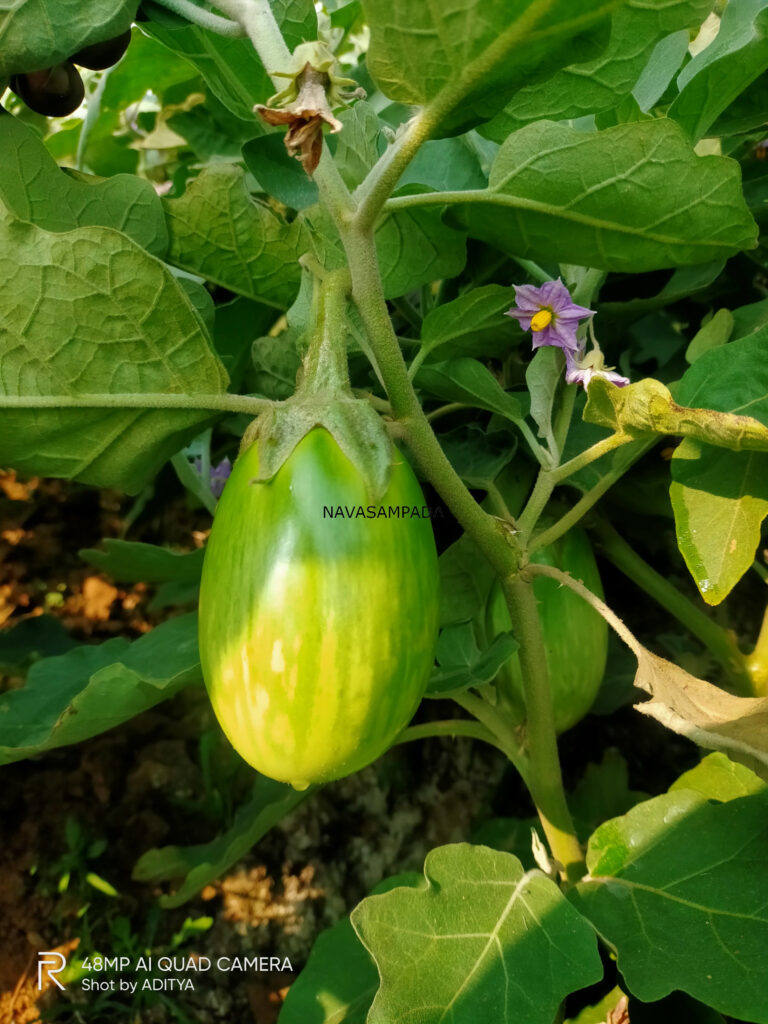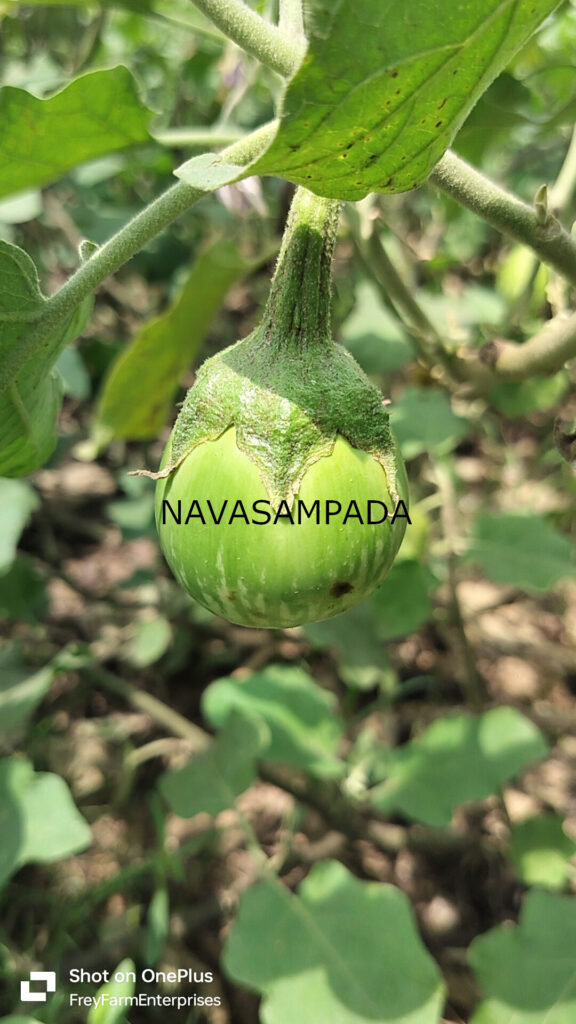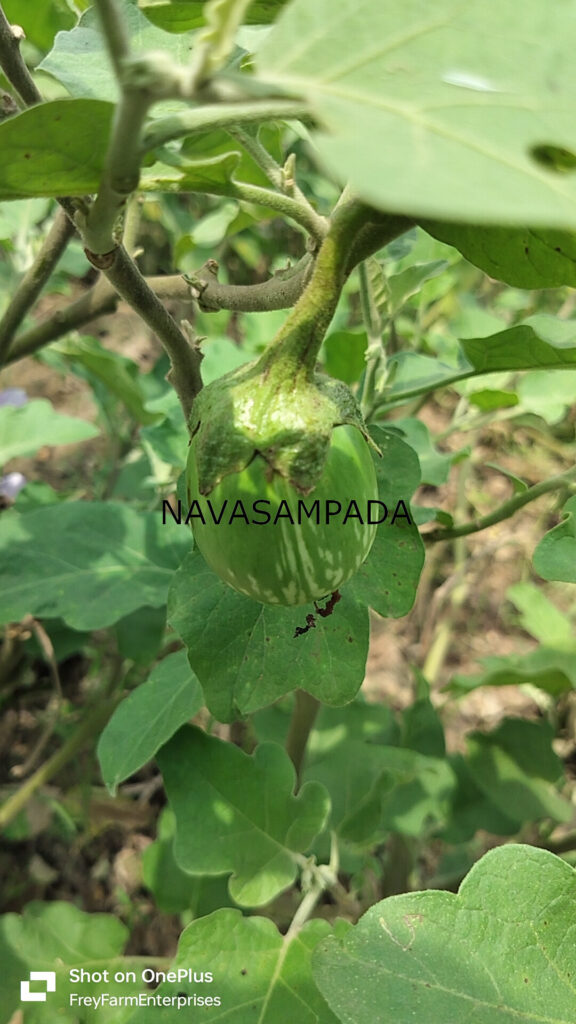Brinjal, commonly known as eggplant (*Solanum melongena*), is a versatile and highly popular crop grown in warm climates around the world. Known for its distinct purple or white fruits, it thrives in tropical and subtropical regions and can be a profitable addition to any farm. This comprehensive guide will walk you through each step of brinjal farming, from soil preparation to harvest and beyond, to help you grow a healthy, high yielding crop.
Choosing the Right Brinjal Variety
Brinjal comes in various shapes, sizes, and colors. Selecting the right variety is crucial based on your local climate, soil type, and market demands. Some common varieties include:
Purple Oval: The most commonly grown variety, known for its rich purple color and medium size.
White Brinjal: A less common variety with white skin, used in various cuisines.
Long or Finger Brinjal: Slender and elongated fruits, often purple or green.
Mini or Baby Brinjal: Small Sized fruit, popular in certain markets.
Hybrid Varieties: Bred for improved disease resistance, higher yields, and uniformity.
Choosing the right variety can make a significant difference in your crop’s success, so consider local conditions and consumer preferences when selecting.



Soil Preparation for Brinjal Farming
Brinjal plants require well drained, fertile soils for optimal growth. The ideal soil pH range is 6.0 to 7.0, slightly acidic to neutral. Proper soil preparation helps improve root development and ensures high yields.
Soil Testing: Before planting, conduct a soil test to check nutrient levels and pH balance. This helps in selecting the appropriate fertilizers.
Amend the Soil: Add organic matter such as compost or well rotted manure to improve soil fertility and texture. This will help with moisture retention and nutrient availability.
Tillage: Till the soil to a depth of 8–12 inches (2030 cm) to enhance aeration and promote better root penetration.
Fertilization: Incorporate phosphorus and potassium during soil preparation to support root growth. Nitrogen can be added later to encourage vegetative growth.
Seed Selection and Nursery Preparation
Brinjal is typically started from seeds, which can either be directly sown in the field or started in a nursery for stronger seedlings.
Seed Selection: Choose high quality seeds from a reputable source. Hybrid seeds may offer higher yields and disease resistance, but make sure they’re certified for best results.
Sowing in Nursery: Start seeds 6–8 weeks before transplanting. Use seed trays or nursery beds with well drained soil mixed with compost. Sow seeds about 1/4 inch (0.5 cm) deep. Keep the nursery at a temperature of 70–80°F (21–27°C) to ensure successful germination, which typically takes 7–14 days.
Transplanting Seedlings to the Field
Transplanting: When the seedlings have 23 true leaves and are around 6–8 weeks old, they are ready to be transplanted into the field.
Field Layout: Prepare raised beds or furrows to improve drainage and root development.
Spacing: Space the plants 18–24 inches (45–60 cm) apart and rows 30–36 inches (75–90 cm) apart for adequate air circulation and growth.
Once the seedlings are strong enough, it’s time to transplant them into the prepared field.
Planting Depth: Ensure that seedlings are transplanted at the same depth as they were in the nursery to avoid stem rot. Water thoroughly after transplanting to help the plants settle.
Watering and Irrigation Management
Brinjal requires consistent moisture, but overwatering can lead to disease and root rot.
Irrigation: Use drip irrigation or soaker hoses to ensure deep watering while minimizing water wastage. These systems also prevent moisture from reaching the leaves, reducing the risk of fungal diseases.
Watering Needs: Brinjal plants need around 1–1.5 inches (2.5–4 cm) of water per week. Increase watering frequency during dry spells, especially during fruit development.
Mulching: Apply a layer of organic mulch around the plants to retain moisture, suppress weeds, and regulate soil temperature.
Fertilization for Healthy Growth
As a heavy feeder, brinjal requires regular fertilization to ensure healthy growth and good yields.
Initial Fertilization: Apply a balanced fertilizer (NPK 101010 or 141414) at transplanting time to support initial growth.
Top Dressing: After 3–4 weeks, apply a nitrogen rich fertilizer to encourage strong vegetative growth. Potassium is essential for fruit development, so apply potassium based fertilizers during flowering.
Calcium: To prevent blossom end rot, ensure your plants receive adequate calcium, either through lime or calcium nitrate.
Pruning and Plant Care
Pruning and plant support are essential to maintain healthy plants and improve fruit production.
Remove Suckers: Trim side shoots or suckers that grow at the base of the plant to promote better air circulation and a stronger central stem.
Top the Plants: Once the plants reach around 18 inches (45 cm) in height, pinch off the growing tip to encourage branching and more fruit set.
Support the Plants: Use stakes or cages to prevent the plants from toppling over when they start bearing heavy fruit.
Pest and Disease Management
Brinjal is susceptible to several pests and diseases, so proactive management is crucial.
Common Pests: Aphids, whiteflies, fruit and shoot borer, and spider mites are some of the most common pests. Control them using organic methods like neem oil, insecticidal soap, or pheromone traps.
Diseases: Fungal diseases like blight, bacterial wilt, and powdery mildew can affect brinjal. Use fungicides or organic treatments like neem oil, and practice crop rotation to reduce disease risks.
Pest Control Tips: Early monitoring and integrated pest management (IPM) strategies help control pests before they become a problem.
Fruit Development and Care
As the plants flower and start fruiting, ensuring healthy fruit development is key.
Pollination: Brinjal flowers are self pollinating, but bees and other pollinators can improve fruit set. If pollinator activity is low, consider hand pollinating.
Fruit Thinning: To allow the remaining fruits to grow larger, thin out excess fruits that are too close together.
Monitor Growth: Fruits typically take 2–3 months to mature. Keep an eye on their size, color, and firmness to determine when they’re ready for harvest.
Harvesting Brinjal
Brinjal is ready for harvest when the fruits have reached the desired size, are firm, and have a glossy appearance. Here’s how to harvest effectively:
Timing: Harvest fruits when they are glossy and firm, and before they become overripe, which can make them bitter.
Harvest Method: Use sharp scissors or pruning shears to cut the fruit, leaving a small portion of the stem attached to avoid damaging the fruit.
Post-Harvest Handling and Storage
Handling: Be gentle when handling the fruits, as they bruise easily.
Brinjal is highly perishable and requires proper postharvest handling to maintain quality.
Sorting and Grading: Sort the harvested fruits based on size, color, and maturity to meet market standards.
Storage: Store brinjal in a cool, dry place at 50–55°F (10–13°C) with 85–90% humidity. They should be consumed within 12 weeks for optimal freshness.
Packaging: Pack the fruits in crates or baskets lined with soft material to prevent bruising.
Marketing and Selling Your Brinjal
Step 12: To maximize profits, consider your marketing strategy:
Farmers’ Markets: Selling directly at local markets allows you to reach consumers who value fresh, local produce.
Supermarkets or Wholesalers: For large scale production, selling to wholesalers or supermarkets can ensure steady demand.
Value Added Products: If you have surplus brinjal, consider creating value added products such as pickles, jams, or frozen brinjal for sale.
Additional Tips for Success
Crop Rotation: To prevent soil depletion and disease buildup, rotate brinjal with other crops such as legumes.
Market Research: Stay informed about market trends and plan your harvest and sales accordingly to take advantage of peak demand.